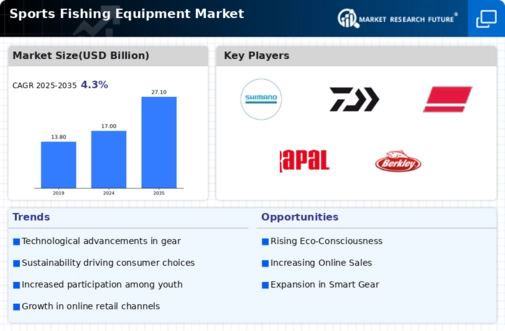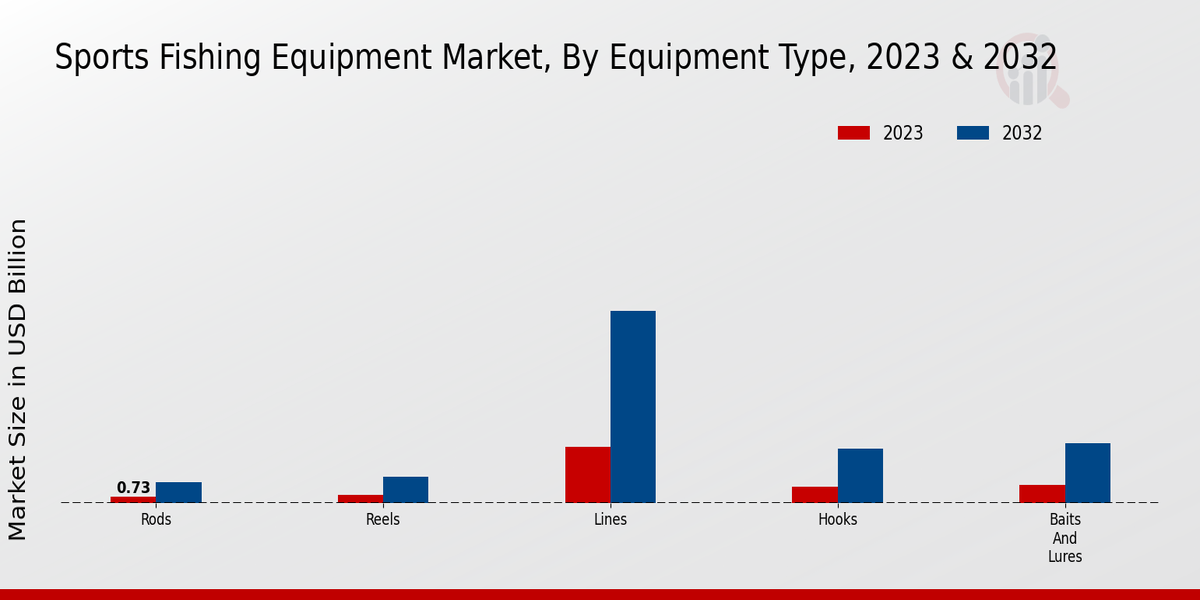Diverse Fishing Styles and Techniques
The Global Sports Fishing Equipment Market Industry benefits from the diversity of fishing styles and techniques that appeal to a wide range of anglers. From fly fishing to deep-sea fishing, each style requires specialized equipment, driving demand for various products. This diversity allows manufacturers to cater to niche markets, creating opportunities for innovation and product development. As anglers explore different fishing methods, the market is likely to see sustained growth, with a projected CAGR of 4.33% from 2025 to 2035. This trend underscores the importance of offering a broad spectrum of fishing gear to meet the evolving preferences of consumers.
Rising Disposable Income and Urbanization
The rise in disposable income and urbanization contributes to the expansion of the Global Sports Fishing Equipment Market Industry. As urban populations grow, more individuals seek recreational activities that provide an escape from city life. Increased disposable income allows for greater spending on leisure activities, including fishing. This trend is particularly noticeable in emerging economies, where urban dwellers are increasingly investing in fishing gear and experiences. The market is projected to grow, with an estimated value of 27.1 USD Billion by 2035, as more people embrace fishing as a viable recreational option.
Sustainability and Eco-Friendly Practices
Sustainability concerns are increasingly shaping consumer preferences within the Global Sports Fishing Equipment Market Industry. Anglers are becoming more aware of the environmental impact of fishing practices, leading to a demand for eco-friendly equipment. Manufacturers are responding by developing sustainable fishing gear made from recycled materials and promoting catch-and-release practices. This shift not only aligns with global conservation efforts but also appeals to environmentally conscious consumers. As sustainability becomes a priority, the market may experience growth driven by products that emphasize responsible fishing and environmental stewardship.
Growing Popularity of Recreational Fishing
The increasing popularity of recreational fishing is a primary driver for the Global Sports Fishing Equipment Market Industry. As more individuals engage in fishing as a leisure activity, the demand for various fishing gear, including rods, reels, and tackle, is expected to rise. In 2024, the market is projected to reach 17.0 USD Billion, reflecting a growing interest in outdoor activities. This trend is particularly evident in regions with abundant water bodies, where fishing clubs and community events promote the sport. The rise in fishing tourism further contributes to this growth, as enthusiasts seek new experiences and locations.
Technological Advancements in Fishing Gear
Technological innovations significantly influence the Global Sports Fishing Equipment Market Industry. The introduction of smart fishing gear, such as fish finders and GPS-enabled devices, enhances the fishing experience for enthusiasts. These advancements not only improve catch rates but also attract a younger demographic to the sport. For instance, the integration of mobile applications with fishing equipment allows users to track their fishing activities and share experiences. As technology continues to evolve, it is likely that the market will see an influx of high-tech products, catering to tech-savvy anglers and potentially increasing market value.

















Leave a Comment